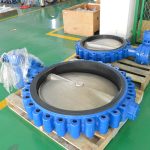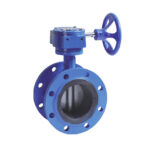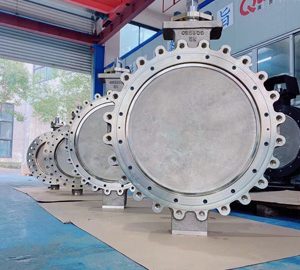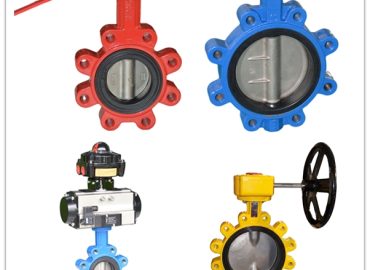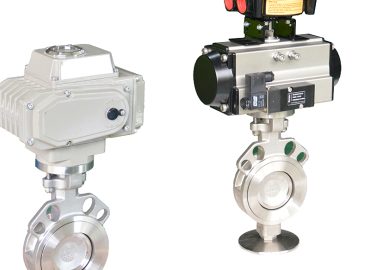Butterfly valves play a crucial role in water cooling systems, regulating the flow of water to prevent overheating and equipment damage. However, with numerous types of butterfly valves available in the market today, selecting the most reliable one for your water cooling system can be a daunting task. In this blog post, we will discuss the different types of butterfly valves commonly used in water cooling systems and compare their features and benefits to determine the most reliable type that can withstand the harsh conditions in a water cooling system. We will also consider important factors to keep in mind when choosing a butterfly valve, such as temperature and pressure requirements, corrosion resistance, and flow control capabilities. By the end of this post, you will have a better understanding of which butterfly valve is the best choice for your water cooling system needs.
Introduction
The most reliable type of wcb butterfly valve to use in a water cooling system depends on several factors, including temperature and pressure requirements, corrosion resistance, and flow control capabilities. The three most common types of butterfly valves used in water cooling systems are concentric, double offset, and triple offset. Concentric butterfly valves are the most basic type and are usually the least expensive. They have a simple design, with a disc that is centered around the pipe axis and a rubber seat that seals the valve. However, they are not recommended for high temperature or high-pressure applications because they have a relatively high torque requirement and may not provide a tight shutoff. Double offset butterfly valves are designed with two offsets: one between the shaft and the centerline of the disc, and the other between the seal ring and the centerline of the valve body. This design reduces the torque required to operate the valve and provides a tight shut-off, making them suitable for higher temperature and pressure applications. Triple offset butterfly valves have three offsets, with the third offset being between the cone-shaped seat and the disc sealing surface. These valves have excellent shut-off capabilities, even at high temperatures and pressures, and are highly resistant to corrosion and erosion. They are also more expensive than concentric and double offset butterfly valves. In summary, the most reliable type of butterfly valve to use in a water cooling system depends on the specific application requirements and budget considerations. For high-temperature and high-pressure applications, triple offset butterfly valves are the most reliable, while concentric butterfly valves are suitable for low-pressure and low-temperature applications. Double offset butterfly valves offer a balance between cost and performance, making them a viable option for medium to high temperature and pressure applications.
Brief overview of wcb butterfly valves and their importance in water cooling systems
Wcb Butterfly valves are an essential component of water cooling systems, used to regulate the flow of water through the system and maintain optimal temperature levels. They are called “butterfly” valves because their disc shape resembles a butterfly’s wings. Butterfly valves are designed to be lightweight and compact, making them popular in a wide range of applications where space and weight are restricted. The valve operates by rotating the disc around its axis, allowing or restricting fluid flow. In a water cooling system, the butterfly valve is typically installed upstream from the heat exchanger and is used to control the flow rate of water to maintain a constant temperature. They are also useful for isolating different sections of the system for maintenance and repair purposes. Without butterfly valves, water cooling systems would be inefficient and prone to equipment failure due to overheating, making them an essential component in the system’s operation.
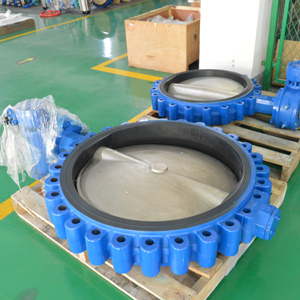
Importance of using a reliable type of wcb butterfly valve in a water cooling system
Using a reliable type of butterfly valve in a water cooling system is crucial to ensure the smooth and efficient operation of the system. A faulty or unreliable valve can cause issues such as leaks, inefficiencies, and even equipment failure due to overheating, which can lead to costly repairs and downtime. Inadequate valves may not be able to withstand the high temperatures and pressures commonly found in water cooling systems, leading to frequent replacements and disruptions in service. Additionally, using a reliable butterfly valve ensures that the system can be easily maintained and repaired without requiring extensive downtime. By investing in a high-quality and reliable butterfly valve, businesses can minimize the risk of equipment failure, reduce costs associated with repairs and improve overall system performance.
Types of wcb butterfly valves commonly used in water cooling systems
There are several types of butterfly valves commonly used in water cooling systems, including concentric, double offset, and triple offset butterfly valves. Concentric butterfly valves are the most basic type of butterfly valve and have a simple construction with the disc centered around the pipe axis. They are typically the least expensive type of valve and feature a rubber seat that provides a tight seal. However, they are not suitable for high-temperature or high-pressure applications as they require a relatively high torque requirement and may not provide a tight shut-off.
Double offset butterfly valves, on the other hand, have two offsets between the shaft and the centerline of the disc, and the other between the seal ring and the centerline of the valve body. This design reduces the torque required to operate the valve and provides a tight shut-off, making them suitable for medium to high-temperature and pressure applications.
Triple offset butterfly valves have three offsets, with the third offset being between the cone-shaped seat and the disc sealing surface. These valves have excellent shut-off capabilities, even at high temperatures and pressures, and are highly resistant to corrosion and erosion. They are also more expensive than concentric and double offset butterfly valves.
Each type of butterfly valve has distinct features and benefits that make them suitable for different applications. Determining which type of butterfly valve is best suited for a particular water cooling system depends on several factors, such as temperature and pressure requirements, flow control capabilities, and corrosion resistance. For example, concentric butterfly valves may be suitable for low-pressure and low-temperature applications, while double and triple offset butterfly valves may be better suited for high-pressure and high-temperature applications. Ultimately, the choice of butterfly valve depends on the specific needs and requirements of the water cooling system.

Concentric butterfly valves
Concentric butterfly valve are the most basic and common type of butterfly valve, featuring a simple design with the disc centered around the pipe axis. These valves have a rubber seat that provides a tight seal when the valve is in the closed position. The straightforward construction of concentric butterfly valves makes them an economical choice for many applications, especially where space and weight constraints are present. However, they are generally not recommended for high-temperature or high-pressure applications, as their design requires a relatively high torque to operate and may not provide a completely tight shut-off under such conditions. Concentric butterfly valves are best suited for low-pressure and low-temperature systems where cost-effectiveness and ease of installation are primary considerations.
Double offset butterfly valves
Double offset butterfly valve are a more advanced type of butterfly valve, featuring two offsets in their design. The first offset is between the shaft and the centerline of the disc, while the second offset is between the seal ring and the centerline of the valve body. These offsets reduce the friction between the sealing surfaces, allowing for smoother operation and a tighter shut-off compared to concentric butterfly valves. As a result, double offset butterfly valves are suitable for medium to high-temperature and pressure applications where reliable sealing is crucial. The reduced torque requirement of these valves also contributes to a longer service life and lower maintenance costs. While they may be more expensive than concentric butterfly valves, double offset butterfly valves offer a balance between cost and performance, making them a popular choice for various industrial processes and water cooling systems.
Triple offset butterfly valves
Triple offset butterfly valve are a highly advanced type of butterfly valve, featuring three offsets in their design. The first two offsets are similar to those in double offset butterfly valves, with the third offset being between the cone-shaped seat and the disc sealing surface. This design allows for a virtually frictionless sealing mechanism, resulting in excellent shut-off capabilities even at high temperatures and pressures. Triple offset butterfly valves are highly resistant to corrosion and erosion, making them suitable for demanding applications where durability and reliability are paramount. Although they tend to be more expensive than concentric and double offset butterfly valves, their superior performance and longevity make them a worthwhile investment for critical water cooling systems and other high-pressure, high-temperature processes. The innovative design of triple offset butterfly valves ensures optimal flow control, minimal wear, and extended service life, contributing to the overall efficiency and effectiveness of the systems in which they are installed.
Comparison of each type
When comparing the different types of butterfly valves, it is important to consider the specific requirements and constraints of the application in which they will be used. Concentric butterfly valves, being the most basic type, offer a cost-effective solution for low-pressure and low-temperature applications. They have a simple design with the disc centered around the pipe axis and a rubber seat that provides a tight seal. However, their relatively high torque requirement and limited shut-off capabilities make them unsuitable for high-pressure and high-temperature systems.
Double offset butterfly valves, on the other hand, feature two offsets in their design, reducing friction between sealing surfaces and resulting in smoother operation and a tighter shut-off. These valves are suitable for medium to high-temperature and pressure applications, providing a balance between cost and performance. The reduced torque requirement of double offset butterfly valves contributes to a longer service life and lower maintenance costs, making them a popular choice for various industrial processes and water cooling systems.
Triple offset butterfly valves are the most advanced type, offering superior performance and longevity. They feature three offsets in their design, allowing for a virtually frictionless sealing mechanism and excellent shut-off capabilities even at high temperatures and pressures. Although more expensive than concentric and double offset butterfly valves, their durability, corrosion resistance, and reliable sealing make them an ideal choice for critical applications where reliability and efficiency are paramount.
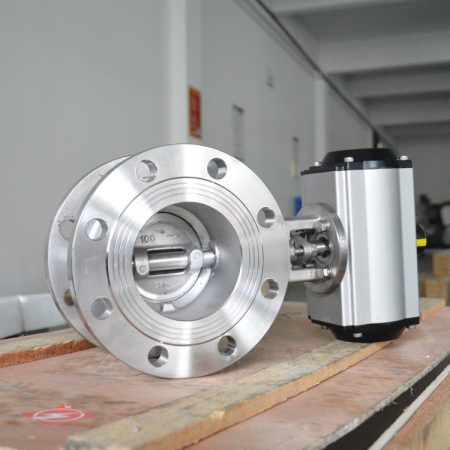
In conclusion, each type of butterfly valve has its unique features and benefits that cater to different application requirements. Concentric butterfly valves are best suited for low-pressure and low-temperature systems where cost-effectiveness is a priority. Double offset butterfly valves offer a balance between cost and performance, making them suitable for medium to high-temperature and pressure applications. Finally, triple offset butterfly valves provide the highest level of performance and durability, ideal for demanding applications where reliability and efficiency are crucial. Ultimately, the choice of the butterfly valve depends on the specific needs and constraints of the application at hand.
Features and benefits of concentric butterfly valves
Concentric butterfly valves are characterized by their simple design, featuring a disc centered around the pipe axis and a rubber seat that provides a tight seal. One of the primary benefits of concentric butterfly valves is their cost-effectiveness, making them an attractive option for applications with budget constraints. Additionally, their straightforward construction allows for ease of installation and reduced space requirements, which is particularly beneficial in systems with limited space and weight allowances. While these valves may not be suitable for high-pressure and high-temperature applications due to their relatively high torque requirement and limited shut-off capabilities, they perform well in low-pressure and low-temperature systems. The features and benefits of concentric butterfly valves make them an ideal choice for numerous applications where affordability, simplicity, and compactness are key considerations.
Features and benefits of double offset butterfly valves
Double offset butterfly valves boast a unique design with two offsets, one between the shaft and the centerline of the disc, and another between the seal ring and the centerline of the valve body. This design significantly reduces the friction between sealing surfaces, resulting in smoother operation and a tighter shut-off compared to concentric butterfly valves. One of the main benefits of double offset butterfly valves is their suitability for medium to high-temperature and pressure applications, thanks to their reliable sealing capabilities. Additionally, the reduced torque requirement of these valves contributes to a longer service life and lower maintenance costs, making them an efficient choice for various industrial processes and water cooling systems. While double offset butterfly valves may be more expensive than concentric butterfly valves, they offer an optimal balance between cost and performance, catering to a wide range of applications where reliable flow control and durability are essential.
Features and benefits of triple offset butterfly valves
Triple offset butterfly valves are distinguished by their advanced design, which incorporates three offsets – two similar to double offset butterfly valves and a third one between the cone-shaped seat and the disc sealing surface. This innovative design enables a virtually frictionless sealing mechanism, delivering exceptional shut-off capabilities even under high temperatures and pressures. One of the main benefits of triple offset butterfly valves is their superior performance and longevity, making them ideal for demanding applications where reliability and efficiency are crucial. These valves are highly resistant to corrosion and erosion, ensuring durability in challenging environments. Although triple offset butterfly valves tend to be more expensive than concentric and double offset butterfly valves, their unparalleled performance and extended service life justify the investment. The cutting-edge design of triple offset butterfly valves ensures optimal flow control, minimal wear, and an enhanced lifespan, contributing to the overall effectiveness and efficiency of the systems in which they are installed.
Factors to consider when choosing a wcb butterfly valve for a water cooling system
When selecting a butterfly valve for a water cooling system, it is essential to consider several factors to ensure optimal performance and longevity. First and foremost, the operating conditions of the system, including pressure and temperature, play a crucial role in determining the most suitable valve type. Concentric butterfly valves are appropriate for low-pressure and low-temperature applications, while double offset butterfly valves cater to medium to high-temperature and pressure requirements. Triple offset butterfly valves are the best choice for demanding high-pressure and high-temperature environments where superior sealing capabilities are necessary.
The type of fluid being managed within the cooling system must also be considered, as certain materials may react or corrode when in contact with specific fluids. Selecting the right materials for the valve’s components, such as the disc, seat, and body, will prevent premature wear or failure due to corrosion. Additionally, the flow control requirements of the system should be taken into account. Accurate flow regulation can be achieved by choosing a valve with the appropriate actuation method, such as manual, electric, or pneumatic, depending on the level of precision and automation needed.
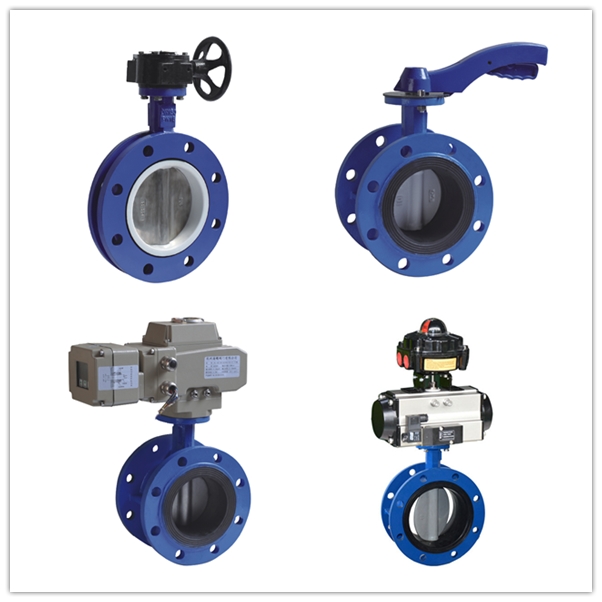
Budget constraints are another factor to consider when choosing a butterfly valve for a water cooling system. While concentric butterfly valves may be the most cost-effective option, their limited shut-off capabilities make them unsuitable for certain applications. Double and triple offset butterfly valves, although more expensive, offer better performance and durability, ultimately reducing maintenance costs and downtime in the long run. Balancing cost with performance and reliability is essential in determining the most appropriate valve for the system.
Lastly, space and weight allowances within the system should be evaluated, as different butterfly valve types have varying space requirements and weights. Concentric butterfly valves are known for their compact design, while double and triple offset butterfly valves may require additional space due to their more complex construction. Choosing a valve that fits within the system’s spatial limitations will ensure proper installation and operation.
In conclusion, selecting the right butterfly valve for a water cooling system involves a thorough evaluation of factors such as operating conditions, fluid type, flow control requirements, budget constraints, and space allowances. Careful consideration of these factors will ensure optimal system performance, reduced maintenance costs, and a longer service life for the chosen valve.
Temperature and pressure requirements
Temperature and pressure requirements play a critical role in determining the most suitable type of valve for a particular application. Each valve type is designed to perform optimally within specific temperature and pressure ranges, making it essential to understand these limitations before selecting a valve. For instance, concentric butterfly valves are ideal for low-pressure and low-temperature systems, offering cost-effective and compact solutions. However, their relatively high torque requirement and limited shut-off capabilities make them unsuitable for high-pressure and high-temperature applications. Double offset butterfly valves, on the other hand, cater to medium to high-temperature and pressure scenarios, providing reliable sealing and smooth operation. Triple offset butterfly valves excel in demanding high-pressure and high-temperature environments, offering superior performance and durability. By carefully assessing the temperature and pressure requirements of a system, engineers can select the appropriate valve type to ensure optimal performance, efficiency, and longevity.
Corrosion resistance
Corrosion resistance is a vital consideration when selecting valves for various applications, as it directly impacts the durability, performance, and longevity of the valve. Corrosion occurs when a material reacts with its environment, leading to gradual degradation and eventual failure of the component. In the context of valves, materials such as the disc, seat, and body must be chosen carefully to prevent corrosion caused by exposure to specific fluids or environmental conditions. Valves made from materials like stainless steel, brass, or bronze exhibit excellent corrosion resistance, making them suitable for use in harsh environments or with corrosive fluids. Additionally, some valve designs, such as triple offset butterfly valves, inherently offer enhanced corrosion resistance due to their advanced sealing mechanisms and minimal wear. By prioritizing corrosion resistance when selecting a valve, engineers can ensure extended service life, reduced maintenance costs, and optimal performance even in challenging operating conditions.
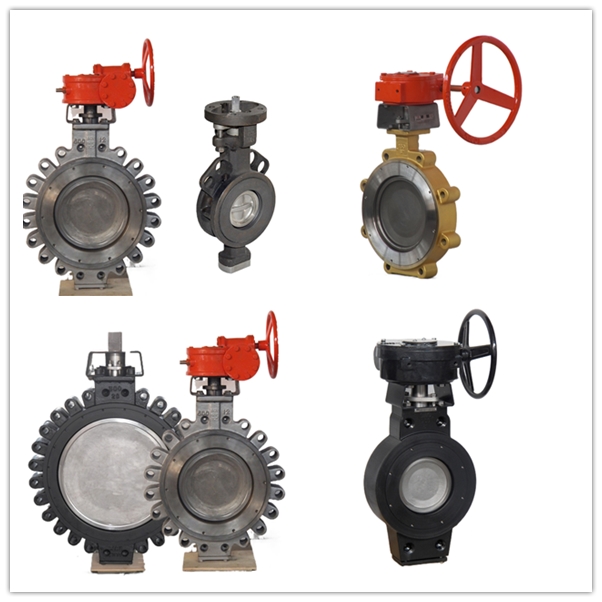
Flow control capabilities
Flow control capabilities are a crucial aspect of valve selection, as they directly influence the efficiency and effectiveness of fluid management within a system. Different valve types offer varying levels of flow control, ranging from simple on-off functionality to precise and adjustable regulation of fluid flow. Butterfly valves, for instance, provide a relatively linear flow characteristic, allowing for smooth and modulated control of fluid flow throughout their operating range. The actuation method employed, such as manual, electric, or pneumatic, also plays a significant role in determining the level of precision and automation in flow control. Accurate flow regulation is essential in many industrial processes and systems, as it ensures consistent performance, minimizes energy consumption, and prevents issues such as cavitation or water hammer. By carefully considering the flow control capabilities of a valve, engineers can select the most appropriate solution for a given application, ultimately optimizing system performance and reliability.
Conclusion
Throughout this blog post, we have explored the various types of butterfly valves available for use in water cooling systems and discussed the factors that contribute to their reliability. It is evident that the most reliable butterfly valve depends on the unique operating conditions and requirements of your specific system.
To recap, concentric butterfly valves are a cost-effective and compact choice, well-suited for low-pressure and low-temperature applications. However, they may not offer the best reliability in high-pressure and high-temperature situations due to their limited sealing capabilities and increased torque requirements.
Double offset butterfly valves provide a more reliable solution for medium to high-temperature and pressure applications, thanks to their design that reduces friction between sealing surfaces and ensures tighter shut-off. These valves strike a balance between cost and performance, making them a reliable choice for many water cooling systems.
For demanding applications where superior sealing capabilities, durability, and longevity are paramount, triple offset butterfly valves emerge as the most reliable option. Their advanced design, incorporating three offsets, delivers virtually frictionless sealing and exceptional shut-off capabilities, even under extreme temperatures and pressures. Although these valves come with a higher price tag, their unparalleled performance and extended service life justify the investment.
In conclusion, selecting the most reliable butterfly valve for your water cooling system requires a thorough evaluation of factors such as temperature, pressure, fluid type, flow control requirements, and budget constraints. By carefully considering these factors and understanding the unique features and benefits of each butterfly valve type, you can make an informed decision that will optimize your system’s performance and reliability.
Remember that investing in the right butterfly valve is crucial for the efficient operation and longevity of your water cooling system. Don’t hesitate to consult with experts and conduct thorough research before making your final decision. With the appropriate butterfly valve in place, you can expect improved system performance, reduced maintenance costs, and a longer service life, ensuring the overall success of your water cooling system.
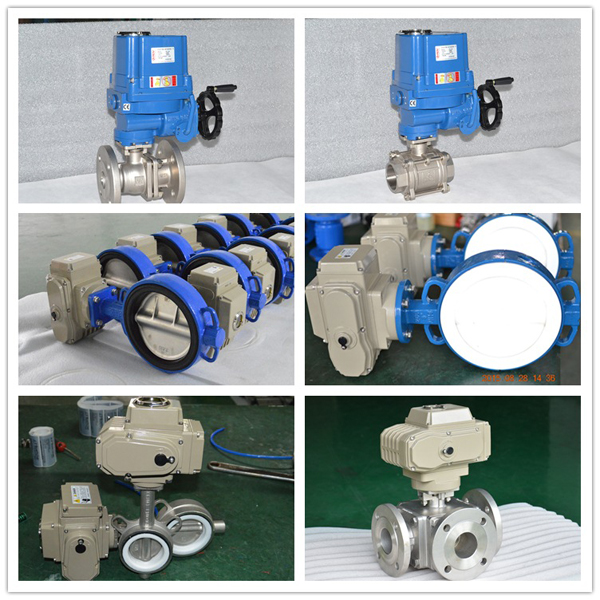
Summary of the different types of wcb butterfly valves, their features and benefits
In summary, pnematic butterfly valves are versatile flow control devices that come in three main types, each offering distinct features and benefits. Concentric butterfly valves, characterized by their simple design and central stem, are cost-effective and compact, making them suitable for low-pressure and low-temperature applications. However, they may have limited sealing capabilities and higher torque requirements. Double offset butterfly valves, with their two offsets, provide better sealing and smoother operation, catering to medium to high-temperature and pressure situations. These valves strike a balance between cost and performance, making them a reliable choice for various applications. Lastly, triple offset butterfly valves incorporate three offsets, resulting in virtually frictionless sealing and exceptional shut-off capabilities even under extreme temperatures and pressures. While more expensive than other types, their superior performance, durability, and longevity make them the most reliable option for demanding environments. By understanding the unique features and benefits of each type of butterfly valve, engineers can select the most appropriate solution for their specific application and system requirements.
Recommendation on the most reliable type of wcb butterfly valve to use in a water cooling system based on the factors discussed
Based on the factors discussed, we recommend using a double offset butterfly valve for most water cooling systems, as it offers a balance between cost and performance. These valves are suitable for medium to high-temperature and pressure applications, providing reliable sealing and smooth operation. Their design significantly reduces friction between sealing surfaces, resulting in improved durability and longevity compared to concentric butterfly valves. However, if the water cooling system operates under extreme temperatures and pressures or requires exceptional sealing capabilities, a triple offset butterfly valve would be the most reliable choice, despite its higher cost. Ultimately, engineers should carefully evaluate the specific operating conditions and requirements of their water cooling system, such as temperature, pressure, fluid type, and flow control needs, to select the most reliable butterfly valve that ensures optimal performance and efficiency.



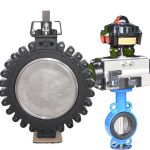
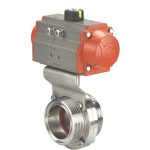
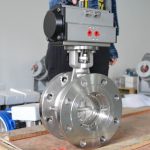
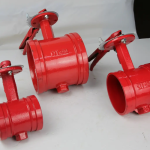
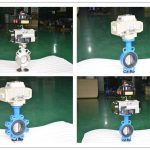
-150x150.jpg)
